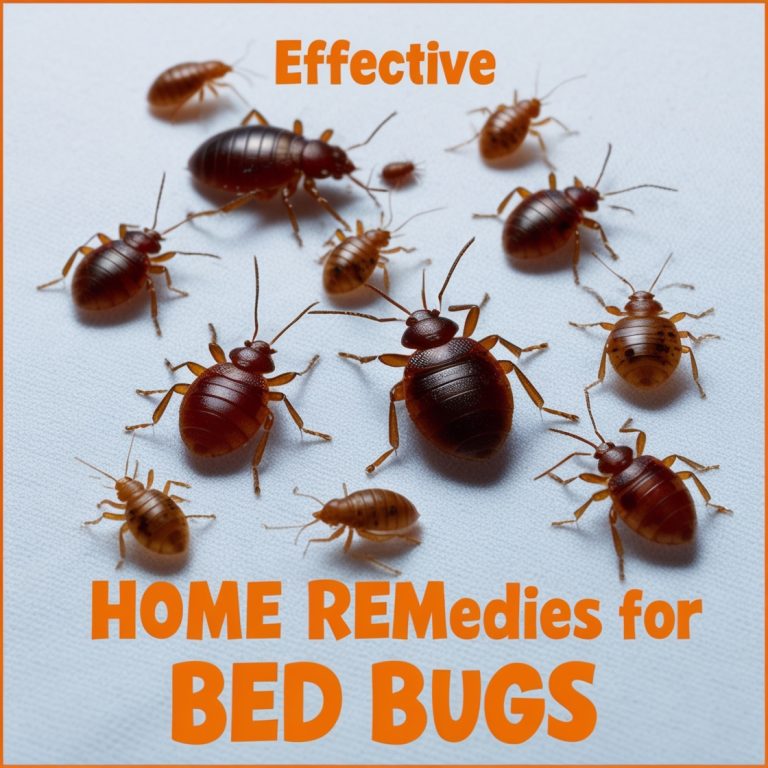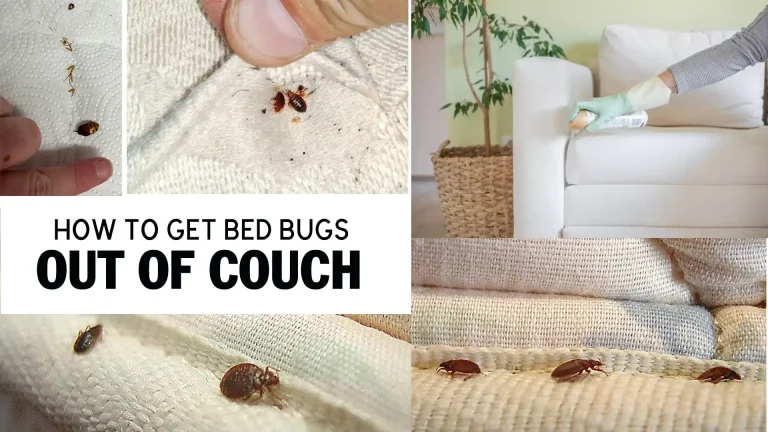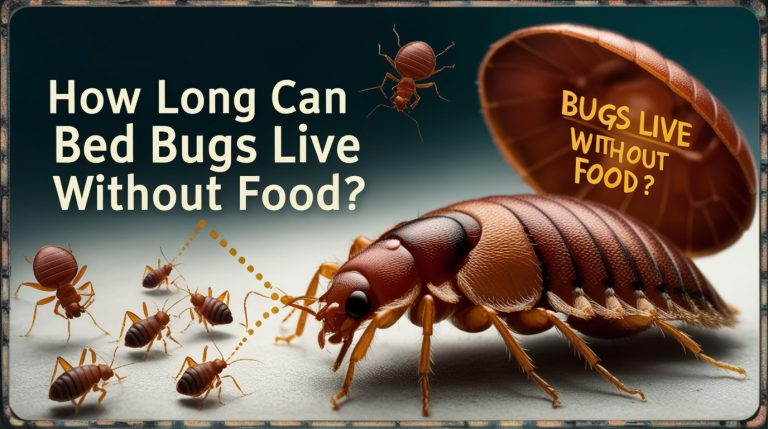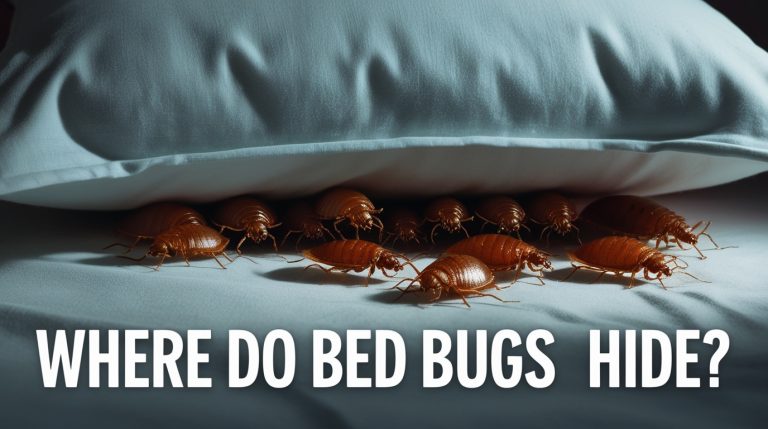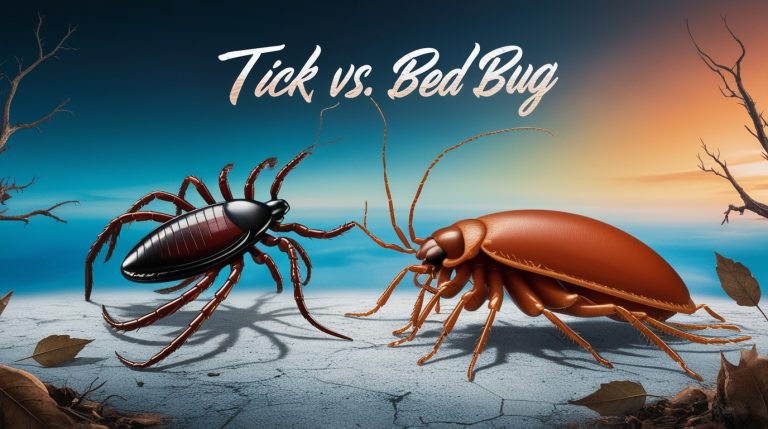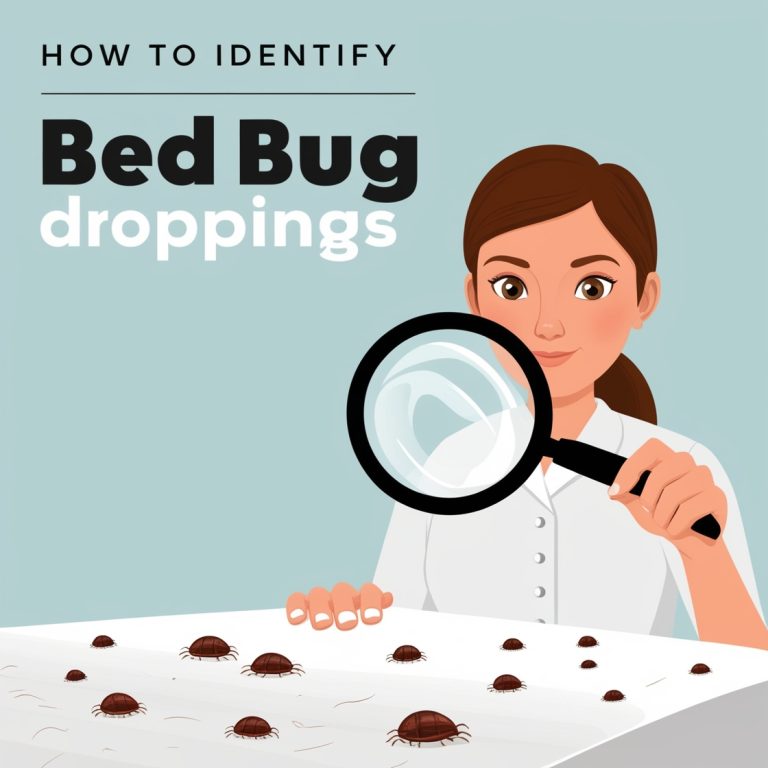13 Shocking Bugs Mistaken for Bed Bugs After Discovering Bites
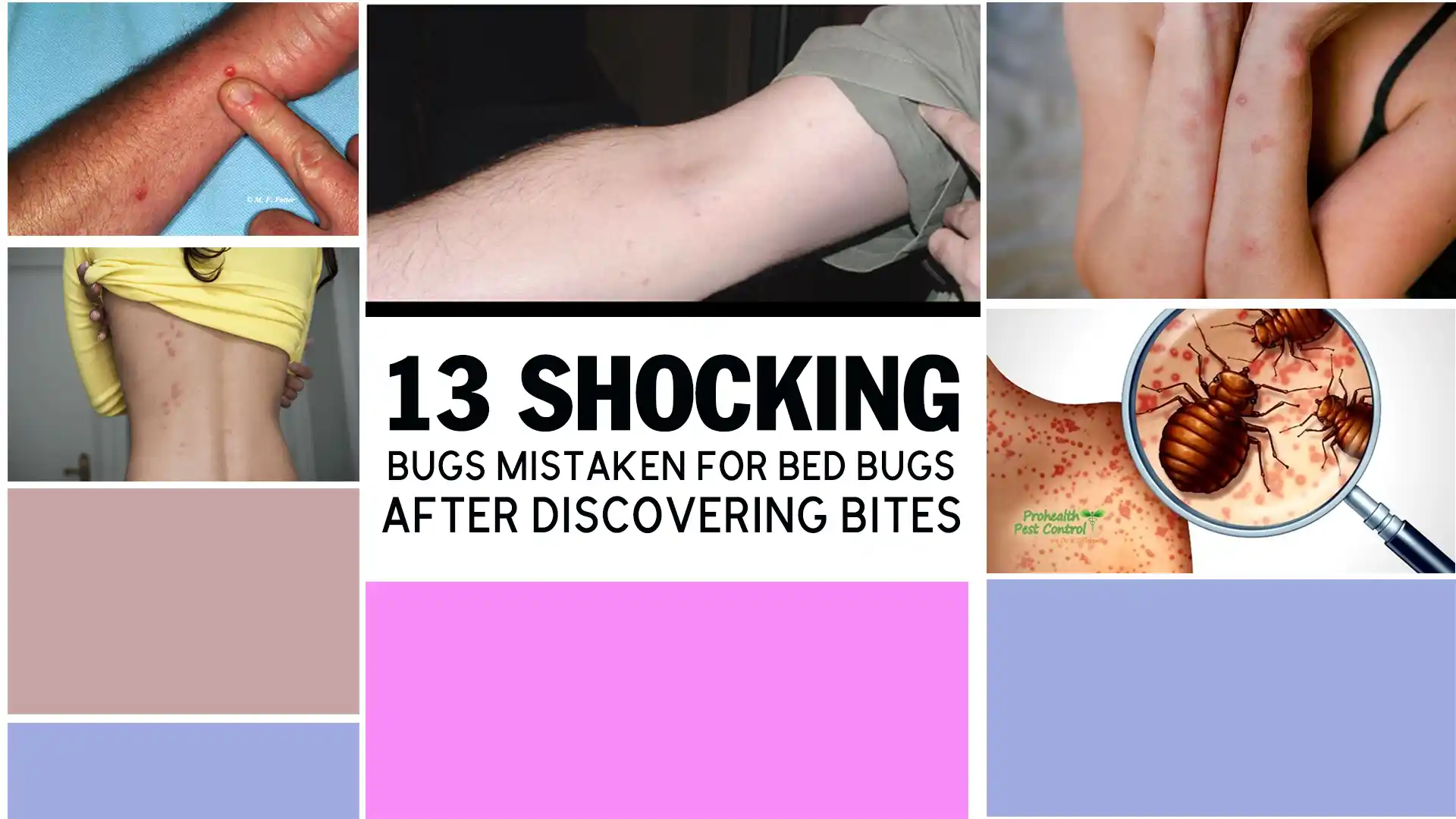
Bed bugs are very bothering to find at home. They sneak in fast and are hard to spot. You usually only know from bites at night or blood spots on the sheets that the tiny bugs fed while you slept!
When someone finds them, there is often panic to ID and eliminate the parasitic bugs. But other small, oval, brown-colored insects are commonly mistaken for bed bugs since they resemble bed bugs.
Not knowing right can waste time, money, and risk health. So you must make sure a bug truly is a bed bug before treating for them. Many times, the bug turns out to be harmless pests like spider beetles or carpet beetle worms sharing space, not needing pest control.
This guide outlines tips to correctly recognize bed bugs and rule out the 13 most shocking Bugs that look like bed bugs:
• What Bed Bugs Look Like – Key ID Clues
• 13 Bugs commonly Mistaken for Bed Bugs
• Other Confirmation Methods for Bed Bugs
• When to Call Pros to Assess & Eradicate
What Do Bed Bugs Look Like?
Learning some specific traits makes verifying bed bugs much simpler. Two main clues are checking the shape and feeding patterns.
Adult bed bugs have oval bodies seeming pressed flat top to bottom. They resemble apple seeds unlike longer house insects. When young nymphs, they appear nearly see-through until feeding the first time.
Additionally, bed bugs only eat blood, not regular house foods. So bite marks or blood stains often confirm them quickly.
A few more facts about how bed bugs look:
• Adults about 5mm long – smaller than apple seeds
• Bodies very flat unless full from feeding
• Color ranges from white after molting to brown/red hues
• Word “book” matches letter C body resembling book spines
Bed bugs do have some clear physical differences from other household insects commonly incorrect for them.
13 Bugs commonly Mistaken for Bed Bugs
Now that the basics are covered, let’s review the 13 most shocking insects often incorrect for bed bugs when people find skin bites or sheet blood spots. Learning their differences prevents mix-ups.
These insects resemble bed bugs in some ways but diverge in others:
• Carpet Beetle Larvae
• Carpet Beetles
• Bat Bugs
• Spider Beetles
• Fleas
• Young Cockroaches
• Ticks
• Booklice
• Cigarette Beetles
• clothes Moths
• Dust Mites
• Centipedes
• Crane Fly Maggots
Let’s summarize why each insect resembles bed bugs under initial inspection.
1. Carpet Beetle larvae
Carpet beetle larvae are one of the most common bugs bugs that look like bed bugs. Their hairy bodies appear almost identical in size and shape to bed bug nymphs. . The covering of hairs makes them resemble bed bugs to casual glances as they crawl.
The worms also eat various common household items like cloth, leather, dried food, etc. causing damage. This leads homeowners discovering them to think the worms are bed bugs.
Difference details include:
• They have visibly segmented bodies curving more than bed bugs
• Their large legs compared to small bodies
• Hairy exterior unlike smooth bed shells
Basically, if one has fine hairs and curves side-to-side moving, they cannot be a bed bug. Crushing them drips yellow fluid, while bed bugs bleed red blood color if smashed.
2. Carpet Beetles
Adult carpet beetles also often mistaken for bed bugs. Their oval shape and scale triggers assumptions. Some beetle species have markings resembling bed bug bodies.
But the grown beetles showcase main attributes separating them:
• Larger, rounder bodies than flat bed shapes
• Visible wings and covers bed bugs lack
• Microscopic unique markings
• Eat decaying materials, not blood
• Move slower than bed bugs
So if one displays clear wings or distinct patterns, it clearly falls outside the bed category. Side fact – carpet beetles damage more items in households than worms.
3. Bat Bugs
Bat bugs may aptly impersonate bed bugs because they look near identical and drink blood too. In fact, they belong to the same insect group and share many attributes.
They mainly feed on bats instead of people so get mistaken for bed bugs if biting humans when bats vacated the area.
A tactic that helps identify them involves checking for slightly longer hairs versus bed varieties under magnification. Their location patterns in the home and any bats roosting onsite also provides clues distinguishing them.
Interesting notes show bat bugs are more reluctant to bite humans than bed types but can if hungry. They also manage longer periods without feeding.
4. Spider Beetles
Spider beetles suitably resemble spiders based on small markings visible under magnification that bed bugs lack. They also walk faster than bed bugs.
But quick peeks reveal similar oval bodies and red-brown color causing frequent mix-ups by homeowners thinking spider beetles are bed eggs or babies.
Key differences detected closer up include:
• Spider beetles lay spherical eggs not seen with bed bugs
• They consume pollen, plants and fungi unlike blood feeding bed bugs
• A higher, mound body shape differs from flat bed silhouettes
• Naturally live outdoors, not human structures and beds
Spider nesting localizes in cluttered, untouched crevices with lint, not tidier bed bug haunts. So professionals can typically rule them out quickly.
A fact highlights spiders undergo complete metamorphosis while bed bugs have incomplete changes through nymph phases.
5. Fleas
Home flea prevalence lands them high among bed impersonators. Itchy bite patterns commonly found on legs/ankles mimic assumptions of bed bugs.
But closer inspections reveal contrasts:
• Much smaller sizes than bed diameters
• Deep red colors unlike brown bed tones
• Jumping movements – bed bugs cannot jump
• More multiplied egg cases than bed births
• Thinner tubular feces unlike bed pellet shapes
• Outside pet hosts more often than indoor beds
Essentially, fleas and bed bugs share nuisance bites but vastly differing attributes and habits. Fleas rely on hosts like pets going inside then feed briefly before returning outdoors while bed bugs remain on chosen human areas.
6. Cockroach Nymphs
Cockroach nymphs also deceive and appear potentially identical at first when glimpsed rushing around when lights flip on at night – small, oval, brown/red bugs.
But observing reveals separations from bed bugs like:
• Visible segmented plates on abdomens
• Speedier movement than bed capabilities
• Two pronounced antenna bulbs
• Steady changes maturing to larger roaches
• Rotting food preferences, not blood
The main takeaway is cockroaches go through gradual growth phases before drastic size/shape shifts to adults. Bed bugs simply hatch as tiny versions of grown scales without radical physical changes.
7. Ticks
Understandably, ticks also get mistaken for bed pests often. People find assumed bed bugs spreading after nature hikes or pets walking.
But ticks show:
• Inflated oval bodies rather than flattened shapes
• Eight total legs instead of bed’s six
• No signs of wings seen
• Missing head antennae
• Biting animals, not moving between human areas
• Outdoor wilderness habitats, not structures
Interesting contrasts also show ticks don’t fly though bed imprints might glide short distances. And typically only some outdoor tick species infest buildings finding humans there unlike bed focusing on people.
8. Booklice
Homeowners also discover booklice and bed bugs inhabiting books, insulation, food packages, etc. alarming them by accrued microscopic damage.
But booklouse appearances diverge from bed traits including:
• Six legs like beds but covered in fine hairs
• Chewing mouthparts unlike blood feeding types
• Lighter grey or off-white colors often
• Favoring pollen, fungi and starches vs blood
• Apparent coordination movement unlike bed ambling
• Missing wings that bed bugs vestigially show
Despite similarities, booklice only populate areas with mold and fungi growth, not caring for hosts. Bed bugs specifically spread to feed on people.
9. Cigarette Beetles
Cigarette beetle larvae mistaken for bed bugs when found in furniture get assumed as bed takeover when spotted on walls and floors too. Both share a common little oval shape and brownish looks.
But cigarette beetles showcase key variances:
• Even smaller size – half of bed lengths potentially
• Separate upper and lower body segmentations
• Habit to bore perfectly round tunnels
• Only eating tobacco, plants and grains
• Worms lack legs bed nymphs have
10. Clothes Moths
Fabric moths impressively mimic bed attributes since larvae damage household fiber materials bed rely on, with residents mistaking textile holes as proof of bed invasion.
But moth larvae contrasts include:
• No defined body parts like worms
• Missing legs or appendages
• Residing deep inside materials, not exposed residential areas
• Exhibiting lengthwise microscopic hairs
• Motionless when disturbed
Additionally, moth chewing mouthparts cause more intense fabric harm than bed blood nibbles mainly risking home allergies and financial damage.
11. Dust Mites
If prevalence indicated mistaken identity, dust mites might top bed lookalikes with untold millions in virtually all homes. Those with conditions exacerbated by dust see the insects and assume bed bugs.
But despite similarities to booklice, dust mites clearly differ from bed traits:
• Round not oval flat bodies
• See-through exoskeletons
• Inability to leave dust sources long
• Microscopic to the human eye
• Never observed moving or crawling
So although dust mite ubiquitous presence causes owner headaches, they don’t resemble bed feeding activity or bite irritation.
12. Centipedes
Centipedes also get incorrectly assumed as bed pests since both rapidly hide in tight spaces and emerge at night.
But centipedes showcase more extreme differences:
• Dozens of moving legs – not four to six
• Easily visible head antennae
• Segmented hard body plates unlike bed continuous ovals
• Rarely bite people unlike bed focuses
• Preferring moist outdoor areas
Having more body sections and numerous legs, centipedes clearly don’t match bed structural design despite similarities hiding in cracks and wall voids.
13. Crane Fly Larvae
Surprisingly, crane fly maggots actually do result in some bed bug mistaken cases. Homeowners encounter the occasional “leatherjacket slug” indoor from lawns/gardens and understandably assume wild bed swarming.
However, the two insects share practically no commonalities beyond general body outline:
• Much larger size – grows over 1” long
• Legless worm shape – no defined body parts
• Tough, rigid outer skin unlike bed shells
• No signs of wings like bed vestiges
• Only reside in subsurface dirt habitats
So if a bug seems oversized and featureless oval, rule out bed confusion. Instead, it usually proves a harmless turf/garden crane fly maggot.
Confirming Actual Bed Bug Infestations
Above tips help instantly exclude most mistaken cases without bed bug expertise. But some imposters resemble bed ticks closely in limited inspections.
In these cases, homeowners can expand tactics confirming bed sources:
• Inspect for groups/clusters – bed bugs congregate
• Check for uniformity – bed bugs appear nearly identical
• Search for dark blood sacks showing recent feeds
• Consider if recently traveled away from home
• Isolate areas overnight to check bites by morning
• Detect dark stains on surfaces signaling bed poop
• Confirm lack wings in all stages – beds cannot fly
• Inspect enlarged rears after engorging on blood
• Smell for sweet, musty odor of large accumulations
• Attempt flushing beds from spaces to directly ID them
Usually with adequate monitoring, one or more methods above eventually exposes bed hideouts. Repeating isolation and space flushing is key since young nymphs are translucent and easily missed.
When to call a Pest Control
If self-ID isolation seems ineffective before bed bugs numbers grow exponentially, professionals may be needed preventing home takeovers. Signs to call pest control company include:
• Verifying multiple bed bugs by sight
• Daily emergence of new human bites
• Regular blood drops on mattresses/furniture
• Strong sweet smell permeating rooms
• Both nymphs and adults signaling active breeding
• Failure using common self-treatment removal methods
• Wanting guaranteed eradication without sole reliance on personal skills
Seeking qualified help prevents ongoing spread once positively identified. It also reduces follow-on parasite risks bed bugs potentially anchor to locations long-term.
Conclusion
Bed pests certainly disturb households by stealthily grabbing onto human hosts for food without quickly warning homeowners. But incorrectly calling other impersonator bugs bed intruders without confirming risks extensive wasting.
Carefully first ruling out the most commonly incorrect pests avoids assumptions and expense. If exhaustive, patient self-checking does verify bed bugs present, immediately contact professional pest control support to strategically eliminate infestations before exponential spread. Doing so protects homes/inhabitants from perpetuated feeding cycles bed bug infiltrations unleash.

